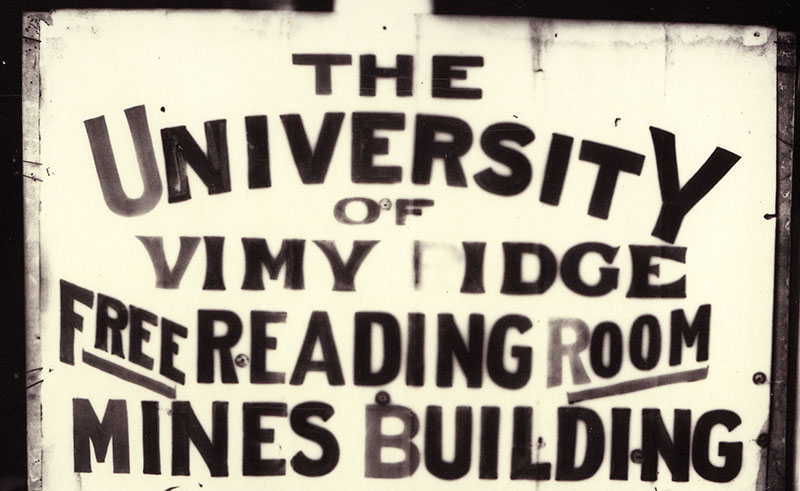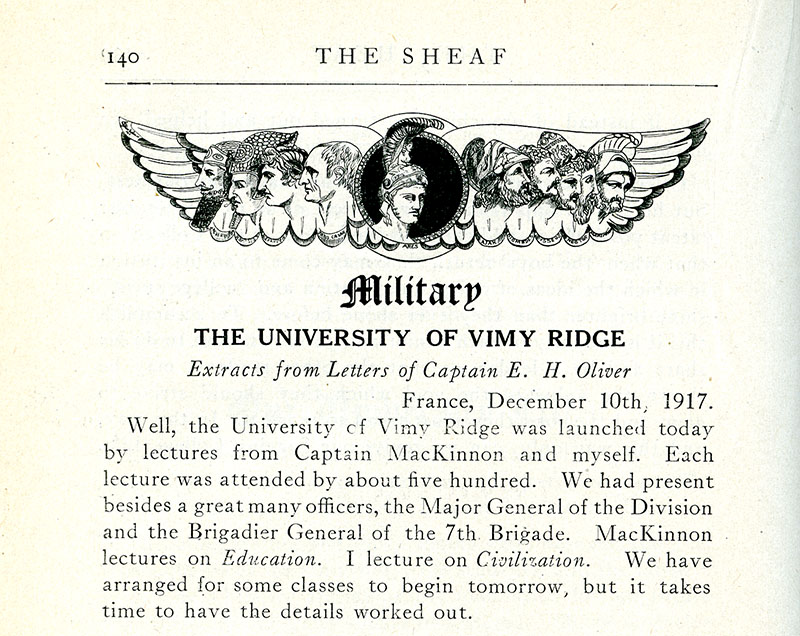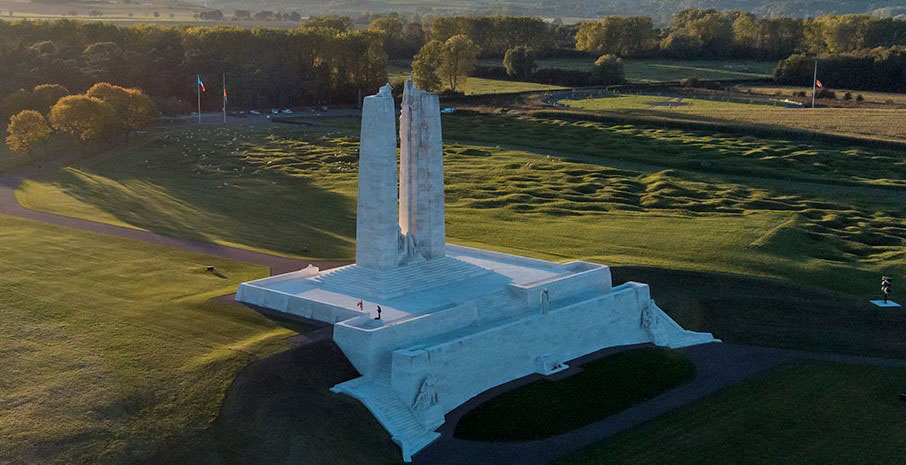
The University of Vimy Ridge: USask on the front lines
As Canada prepares to commemorate Vimy Ridge Day on Wednesday, April 9, On Campus News takes a look at how one faculty member from the University of Saskatchewan (USask) brought a little part of the university to the front lines overseas more than a century ago.
By James ShewagaA total of 345 USask students, staff, faculty and alumni served in the First World War, with 69 never returning home.

In the midst of the mayhem and the tragedy of trench warfare in the Great War, USask faculty member Dr.Edmund Oliver (PhD) helped provide the student soldiers with a break from the death and destruction and a reminder of what awaited them back home, by delivering lectures and lessons on the Western Front in northern France.
The first history professor at the new University of Saskatchewan, Oliver was recruited to come to Saskatoon by President Walter Murray in 1908 to help establish the university, before being appointed principal of Presbyterian Theological College – later renamed St. Andrew’s College. With the outbreak of the First World War, Oliver joined the Canadian Expeditionary Force in 1916 at the rank of captain and served as a chaplain overseas.
In France, as the war entered its fourth year, Oliver and his colleagues established the University of Vimy Ridge in December of 1917, with officers and support staff volunteering to help teach the troops in makeshift facilities – from damaged churches, buildings and homes to large army tents, at times within artillery range of the enemy. As the front lines shifted during offensive actions and defensive maneuvers, classes were held for soldiers on leave, in an ever-changing variety of locations behind the 30-mile Canadian front at Vimy Ridge.

“The army is a great place to start a university,” Oliver wrote in a December 1917 letter to the university’s The Sheaf student newspaper. “Military exigencies are always changing your arrangements. A whole programme will be altered, owing to a fresh disposition or some military change. On the other hand, one does not need to bother his head much about finances, as we pay no salaries … I have arranged to give each battalion a lecture when it comes out of the trenches.”
Oliver was selected to serve as president of the fledgling university and would often drive a bicycle right to the front lines to teach classes and deliver books to the student-soldiers in the trenches. Despite the challenges of trying to teach students in the middle of a war zone, Oliver’s efforts paid off, reporting in February of 1918 that more than 6,000 troops had attended lectures and close to 4,000 had taken part in classes, with more than 4,000 books loaned to the student-soldiers in just one week.
“Well, our reading room is so full that there are lots of boys standing up, and more are coming in through the door,” Oliver wrote in a letter to his wife Rita back home in Saskatoon. “I glance up and there a fellow stands with a gasmask in his hand reading Tennyson.”

Classes and lectures were provided in agriculture, business, science, and citizenship, educating and equipping the soldiers with skills and expertise – not to mention hope for the future – to help them eventually return to the university community and reintegrate into post-war society.
“The Vimy Ridge University scheme has many adjustments to make, but we men welcome the scheme and will take as much advantage as possible of its advantages,” Captain Graham Reynolds of Emmanuel College at USask wrote to President Murray in January, 1918. “Dr. Oliver is working like a horse, he has the enthusiastic support of leading men in our division, and I am sure he will make things go with a swing.”
Dozens of USask students attended the University of Vimy Ridge, which provided a refuge from the horrors of battle and a reminder of what awaited them back home on campus after the war. Tragically, many students from USask – including John James Moore from the historic first graduating class of 1912 – never had the chance to attend the lectures and lessons, falling in the historic Battle of Vimy Ridge a few months before the overseas university had been established.
University of Vimy Ridge operations were suspended in April of 1918 when the Germans launched a massive spring offensive. Seven months later – on November 11, 1918 – the war was over and Oliver returned home to Saskatchewan.

“The centre of interest is now shifted from the armies in the field to the army at home,” Murray wrote in a letter to Oliver at the end of the war that took 69 USask lives, with more than 100 wounded, with 33 awarded medals of valour. “Demobilization is giving rise to a number of very difficult problems, and the attitude of the returned soldier is incalculable and important.”
Post-war, Oliver returned to his passion in a life of service, working in theological education, taking part in the discussions that led to the formation of the United Church of Canada, and serving on two Canadian Royal Commissions. He passed away in 1935 at the age of 53, with Oliver Crescent in Saskatoon’s Greystone Heights neighbourhood named in his honour.
You can read more on USask’s connection to the First World War on the Great War website.
Together we will support and inspire students to succeed. We invite you to join by supporting current and future students' needs at USask.

